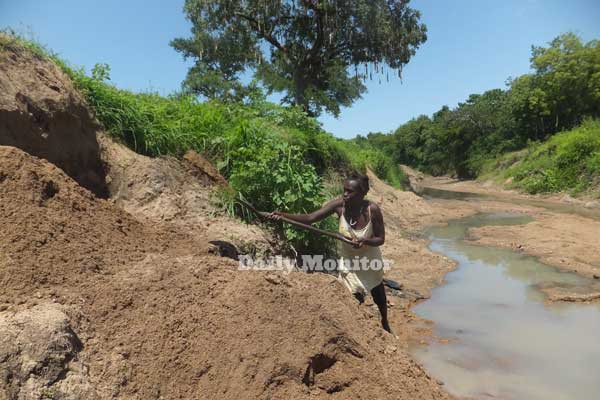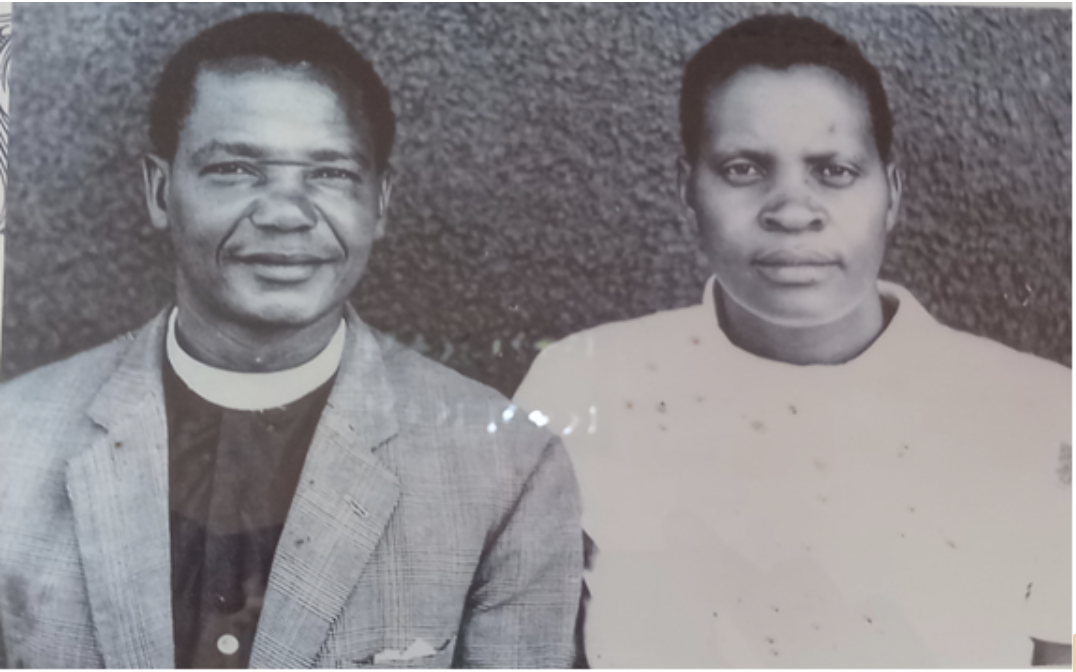Refugees in Adjumani cash in on sand mining at nature’s cost

Ms Rose Lindrio, a South Sudanese refugee, scoops sand for sale near Oliji Bridge in Pachara Sub-county, Adjumani District, last week. PHOTO | MARKO TAIBOT
What you need to know:
- Before she can make a standard sized heap of sand, a truck arrives for it. It is highly demanded in Moyo, Adjumani, Amuru and Gulu towns.
- The mother of five has been sand mining for the past three years since she started living at Alere Refugee Settlement camp.
With a shovel in hand, and feet into River Oliji, Ms Rose Lindrio scoops sand from the muddy water a few metres from Oliji Bridge in Oliji Village, Pachara Sub-county, Adjumani District.
Before she can make a standard sized heap of sand, a truck arrives for it. It is highly demanded in Moyo, Adjumani, Amuru and Gulu towns.
The mother of five has been sand mining for the past three years since she started living at Alere Refugee Settlement camp.
“I walk here every day to do my work between 9am and 5pm so that I return with something to feed my family,” Ms Lindrio says.
Hundreds of refugees from Alere and Oliji refugee settlement camps and host communities flock the area daily to cash in on the activity.
A trip of sand is sold at Shs35,000 but 25 per cent of the money is shared with the landlord.
Mr Francis Agaba, a truck driver, says the sand is the best for construction due to its quality, adding that big construction sites within the refugee settlements use it.
While the activity is changing livelihoods, it has started degrading the environment, and authorities fear that long-term effects could be drastic. Sand mining affects the river bed and changes the river course.
In June last year, several families were displaced when floods swept through their village.Five months later, the floods washed away Oliji Bridge. The bridge connects to Ogujebe refugee settlement.
The collapse of the bridge has since affected the movement of farmers, learners and patients who need to access services in Obongi or Adjumani towns.
Mr Kanzo Kennedy, the Pachara Sub-county chairperson, says farmers find difficulty in transporting their produce to better markets.
However, the district environment officer, Mr James Eberu, says attempts to stop the sand mining activities have been futile.
Mr Eberu says they will work with sub-county authorities to establish punitive measures against activity.
Authorities are also fighting deforestation following the influx of refugees in the district . By April 2019, more than 815,000 South Sudanese refugees and asylum seekers had migrated to Uganda.
A land cover change analysis for Adjumani shows a severe increase in tree cover loss and degradation within and around the refugee settlements.
In 2019, the Food and Agriculture Organisation undertook a rapid assessment of natural resource degradation around the refugee settlements in northern Uganda, with a focus on land and forest resources.
It noted that the influx of refugees exacerbated a range of environmental impacts and associated challenges such as land degradation and woodland loss, resulting in competition with residents for natural resources.
Mr William Amanzuru, an environment activist, is afraid that competition for the available resources could become the next source of tension between refugees and host communities.
He attributes the problem to poor strategy in allocating land to settle the refugees.
Mr Amanzuru says unlike in Bidibidi and Palorinya refugee settlements in Yumbe and Obongi districts respectively, where refugees are concentrated in one area, Adjumani authorities allowed refugee settlements to be scattered.
“Yumbe and Obongi districts had better plans of hosting refugees that limited all of them in only one facility, which made it easier for them to control against environmental degradation since the effect was limited to a single location,” he says.
It is also estimated that 14 refugee settlements in the district use about 345,000 metric tonnes of wood per year, based on the April 2019 refugee population report.
Last month, the district production officer, Dr Godfrey Mamawi, said the district had planted 5,000 trees as part of efforts to restore the trees.
In their 2020 report titled; Safeguarding forests and natural resources around Uganda’s refugee settlements, FAO and the World Bank called for a halt to the degradation of forests and natural resources around Uganda’s refugee settlements.




